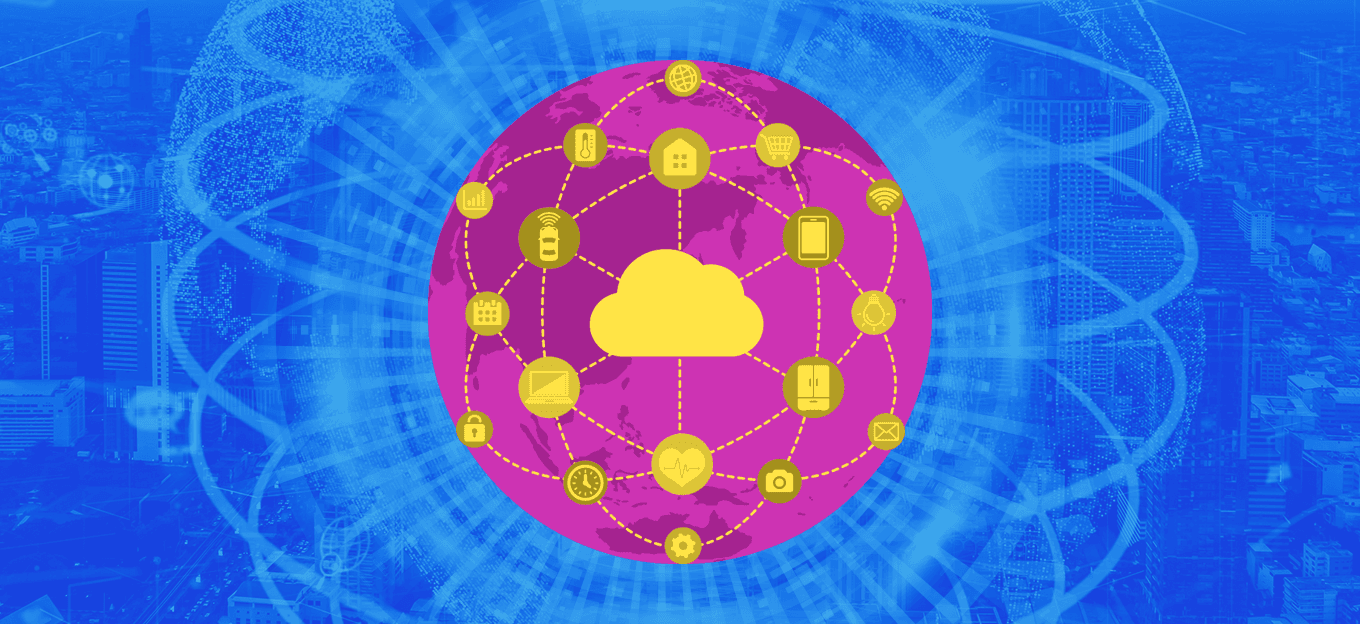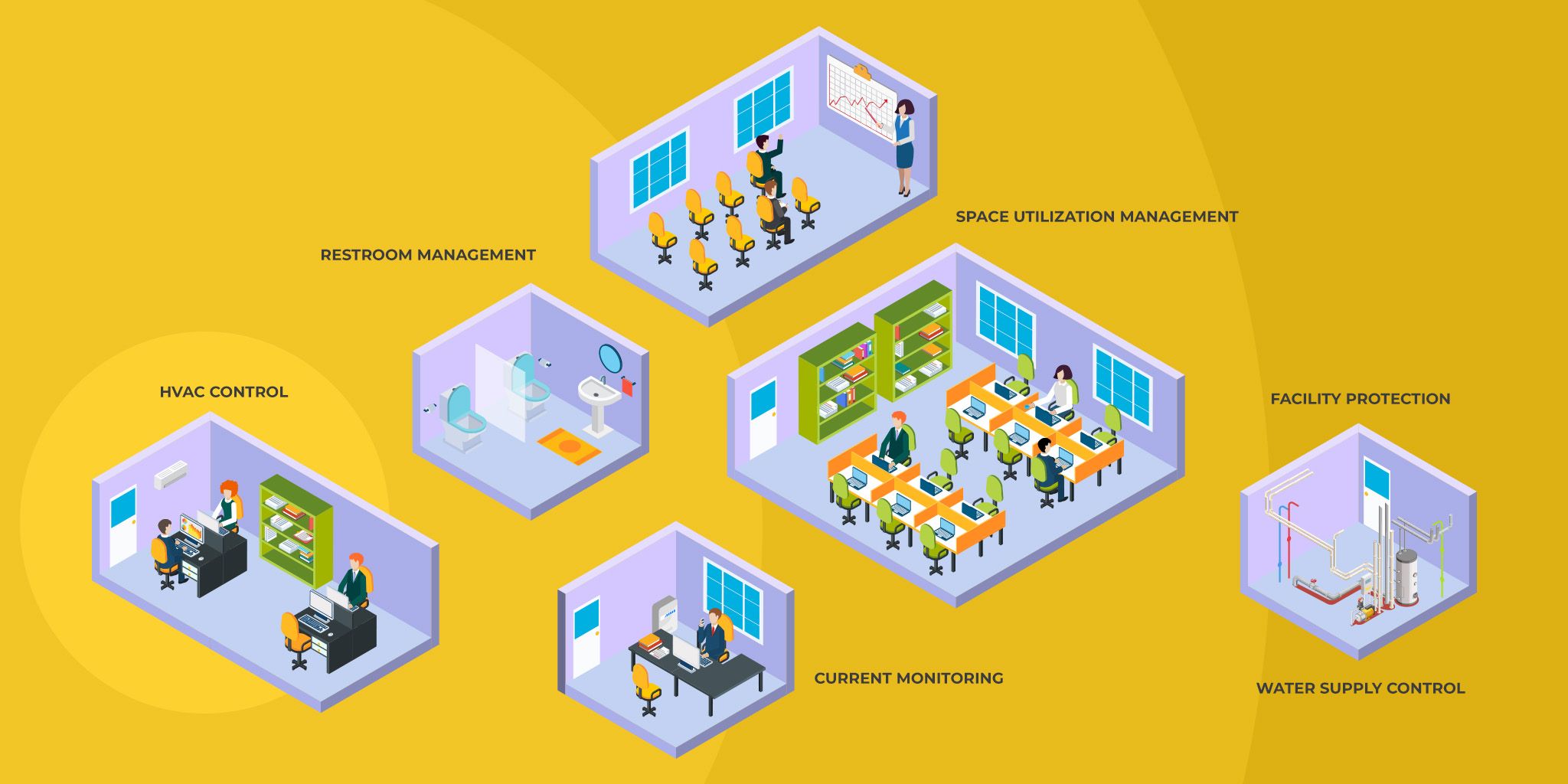IoT Meets Building Automation
IoT Meets Building Automation
- Last Updated: December 2, 2024
Michael Davies
- Last Updated: December 2, 2024



In their early days, building management systems (BMS), also called building automation systems (BAS), proved to be a game-changer. The availability of a computer-based control system that could automatically monitor and manage a building’s largest and costliest operational components helped facilities managers do their jobs better. Building automation systems saved time and money, reduced energy waste, and gave facilities managers a way to better monitor their operations.
We must remember that IoT-based analytics platforms work only because they connect people with technology—without humans at the helm, they’re of little value.
Fast-forward to today, and you have another game-changer: the Internet of Things (IoT) for buildings. At their core, these technologies intersect in some important ways, but it’s where the IoT veers off from BMS that makes it more valuable to facilities personnel as a management tool. This article examines how an IoT analytics reporting platform can enhance the performance of the BMS by offering feedback on energy efficiency—and how that change might impact the role of facilities managers.
How IoT Is Going Beyond Traditional Building Automation
The goal of building management systems was—and still is—to help optimize building performance by
- Providing data on core building operational systems, specifically HVAC.
- Enabling the automatic control of a building’s main operating functions.
IoT for buildings has the same goal of performance optimization (and by extension, saving money) through data and automatic control, but advanced technology takes these aspects many steps further than a traditional BMS system can.
IoT for Buildings: The Data Advantage
The data captured by BMS systems is somewhat limited in use. Here’s why:
- The data collected about various systems is siloed and difficult to integrate. That makes it a challenge to get a full picture of the efficiency of your building operations.
- The lack of an analytics component means the job of data analysis falls on humans. These systems were designed to gather data only for purposes of automating operations, not for performance optimization.
- Conducting such an analysis takes time and expertise—things most facilities teams simply don’t have. Therefore, much of the data goes to waste.
IoT for buildings, on the other hand, makes data collection and analysis simple and cost-effective, and most systems are built for the sole purpose of improving performance. These tools enable remote monitoring of data, bring data from disparate sources together, and catalog and analyze the data for actionable insights. That allows building managers to be more fluid and agile in their ability to respond to certain conditions and control costs.
1. Data from a variety of sources—even those outside your building—can be brought into the fold for analysis. For example, weather data can be combined with utility data (pricing) and HVAC operating data to help you strategize about ways to reduce operating costs on a hot day. If you know in advance the periods of high demand, and therefore the times when energy prices are more expensive, you can elect to turn on the HVAC earlier in the day to cool the building before that peak time occurs.
2. Data can be gathered on a more granular level to achieve greater savings. BMS systems have data only on the major pieces of equipment in your building; IoT allows you to collect data about any aspect of your building’s operation. For example, you can attach IoT sensors to all your building’s equipment (not just the major operational components) for the purpose of power-quality monitoring. Measuring the characteristics of your power supply—including real, apparent, and reactive power—as well as your active energy consumption, can help identify how efficiently your building is using electrical power. If the ratio of real power (kW) to apparent power (kVA) is below 0.85, your utility is likely charging you a power factory “penalty” for inefficiency. Essentially, a kW/kVA ratio below 0.85 means the facility has a low power factor and therefore is not optimizing reactive power use. By taking corrective action, you can avoid this additional charge and lower your bill.
3. Advanced data analysis technology detects barely detectable trends. For example, BMS system set points are established once and then forgotten, giving you no way to identify when the performance of a particular system “drifts” from its original calibration and becomes deficient. The advanced software employed by many IoT building systems uses machine learning to highlight exceptions, anomalies, or aberrant behavior in performance, indicating instances of possible drift. The continuous feedback loop provided by these platforms means you can ensure your equipment is always operating at top efficiency, thus you get maximum return on your investment.
Fine-Grained Control of Your Systems
Building automation enables the basic scheduling of systems—like turning lights on and off at certain times—but this approach does not consider the many factors that play into system optimization.
Greater efficiencies can be achieved when you can control your equipment based on an analysis of a variety of factors, such as the following:
- In contrast with BMS systems that turn HVAC systems on and off based on predefined temperature levels, an IoT building system can utilize demand control ventilation to operate HVAC more intelligently. Based on the idea that CO2 can be used as a proxy for determining actual occupancy of a room or building, indoor air quality sensors measure CO2 levels in real-time. If CO2 levels are in line with building guidelines, the system automatically reduces the outside air intake. If CO2 levels are approaching the limit, it brings in additional outside air. Having greater control over your systems is a smarter way of handling building automation.
You control the kind of data it collects, such as the following:
- Traditional building automation systems don’t typically collect data that would reveal the simultaneous heating and cooling of outside air—its parameters won’t give you that information. An IoT-based system can be engineered to alert you when heating and cooling systems are operating in the same zone at the same time, so you can address the situation immediately.
Facilities Management With IoT-Based Building Automation
IoT-based reporting and analytics platforms promise to be disruptive, but not in the way you might think. These advanced systems won’t replace facilities personnel—they’ll simply offer more insight into ways to optimize energy efficiency.
One obvious difference is the number of endpoints that will have to be managed. In the future, there will likely be an abundance of IoT sensors collecting data on temperature, humidity, static pressure, and more, offering greater visibility into building performance. But the more significant change will be in how remote monitoring of more endpoints can enable feedback loops to determine what approaches offer greater energy efficiency. Having the capability to view the performance of individual system components in context of the larger building operations means there will be more opportunities for facilities managers to provide value.
With the more proactive management strategy that IoT enables, managers can better strategize about ways to cut costs and make a noticeable impact on the bottom line. They will also be well-equipped to contribute substantially in terms of achieving sustainability goals.
Staff members can react more quickly to potential operational issues, being able to pinpoint the source of a problem right away. They’ll also have the information they need to address impending equipment failures before costly, inconvenient breakdowns happen. Maintenance costs are less expensive than emergency repairs. And imagine what it might look like when emergencies occur: a well-informed facilities manager could relay the exact location of a building fire or a dangerous air quality zone, for example, to first responders before they even arrive on site.
IoT-based analytics platforms work only because they connect people with technology—without humans at the helm they’re of little value. Facilities managers who embrace the opportunity will make better decisions and, as a result, help their buildings (and themselves) remain competitive.
The Most Comprehensive IoT Newsletter for Enterprises
Showcasing the highest-quality content, resources, news, and insights from the world of the Internet of Things. Subscribe to remain informed and up-to-date.
New Podcast Episode

What is Hybrid Connectivity for IoT?
Related Articles





